Vibes of the 1960s emanate from the Philadelphia Flower Show (PFS) this year. ‘Flower Power,’ the show’s theme, pays homage to our love affair with flowers and the 50th anniversary of Woodstock.
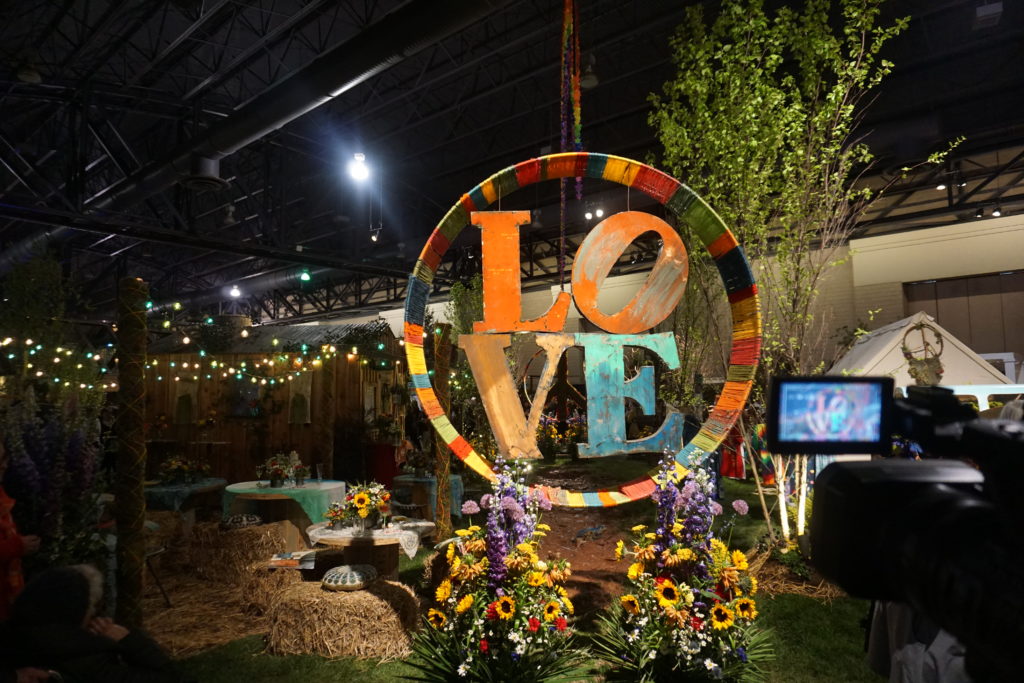
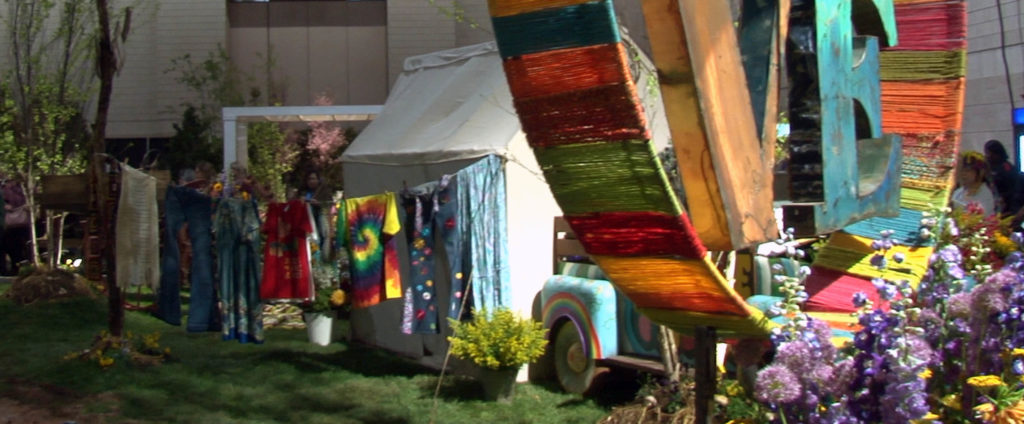
As you walk into the show, you will hear strains of the Beatles, Aretha, Crosby, Stills, and Nash, and others. Look up and you will see a hanging multicolor “meadow” of nearly 8,000 flowers.
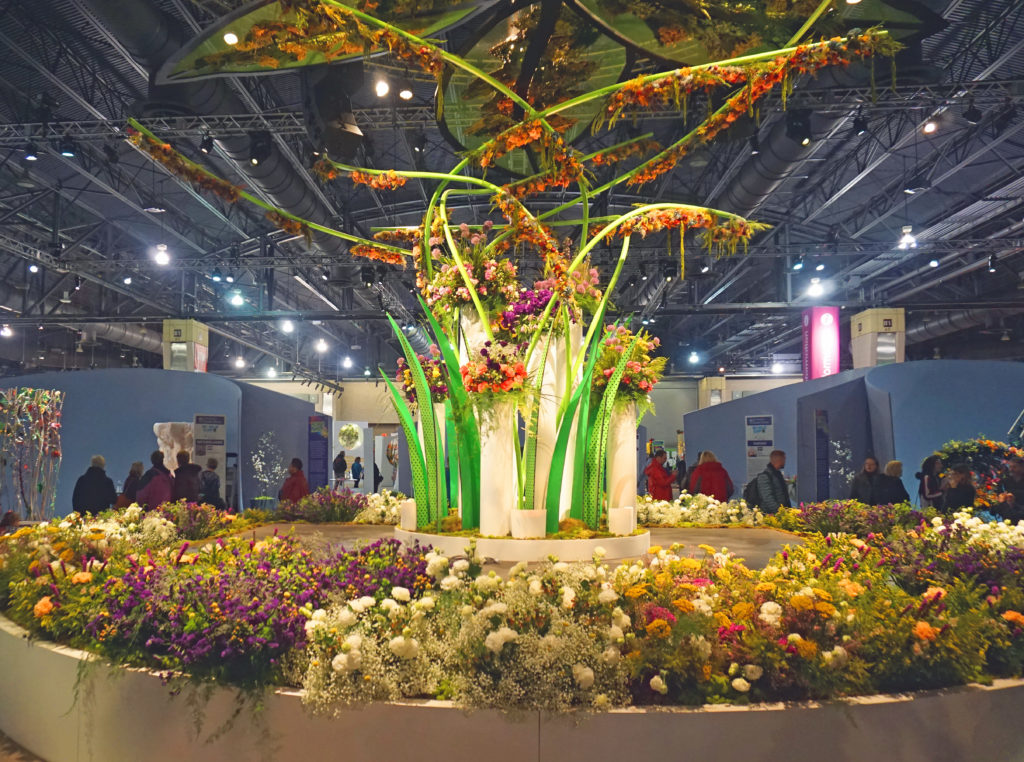
But before strolling down memory lane, the “Olympics” of the floral world requires some attention.
Designers Attend from 23 Countries
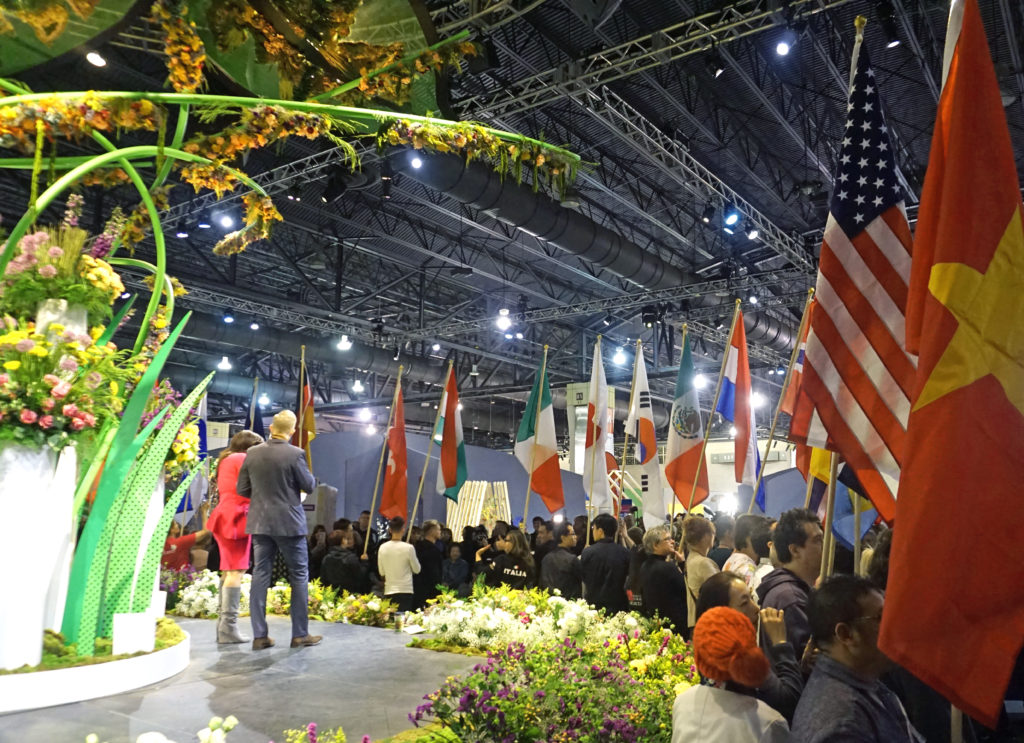
The PFS hosted the 2019 FTD World Cup, the world’s most prestigious floral design competition. Sponsored by Florists’ Transworld Delivery (FTD), it is held roughly every four to six years. It was last held in the United States in 1985.
The designers were chosen to represent their countries based on various criteria including winning national competitions. Each designer worked in a “pod” creating a series of floral arrangements.

The competition began on Friday and ended Sunday evening when Bart Hassam from Queensland, Australia, was named the winner. Born in 1977, he seeks to “create beauty through plant material, with elegance and appropriateness – but above all, with a respect for the flower,” according to his FTD biography.
A look at the artists creating their exhibits Friday, March 1, gave a fascinating glimpse of how they worked. South Korea’s Myeon Oh used several tools to meticulously yet furiously trim and par the sides of flower stems. He then carefully placed the assortment of flowers into buckets for later use.

Another designer, Lina Roig of Spain, created a dome of branches. She later covered this with flowers. The dome was totally hidden once the flowers were added but it provided them with an elegant base on which to rest.
The artists created four designs from pre-decided themes and “surprise” packages on March 1 and 2 while visitors watched intently.
A boisterous parade launched the third competition on Saturday. Japanese, Danish, German, Mexican, Finish, and U.S. flags were among those carried by flag-bearers into the hall. The floral designers followed to cheers from their fans.
Ten semi-finalists were chosen Saturday evening. The final five finalists and the winner, Bart Hassam of Australia, were named Sunday night, March 3. The designs are on view throughout the remainder of the show.
Acres of Flowers and Plants
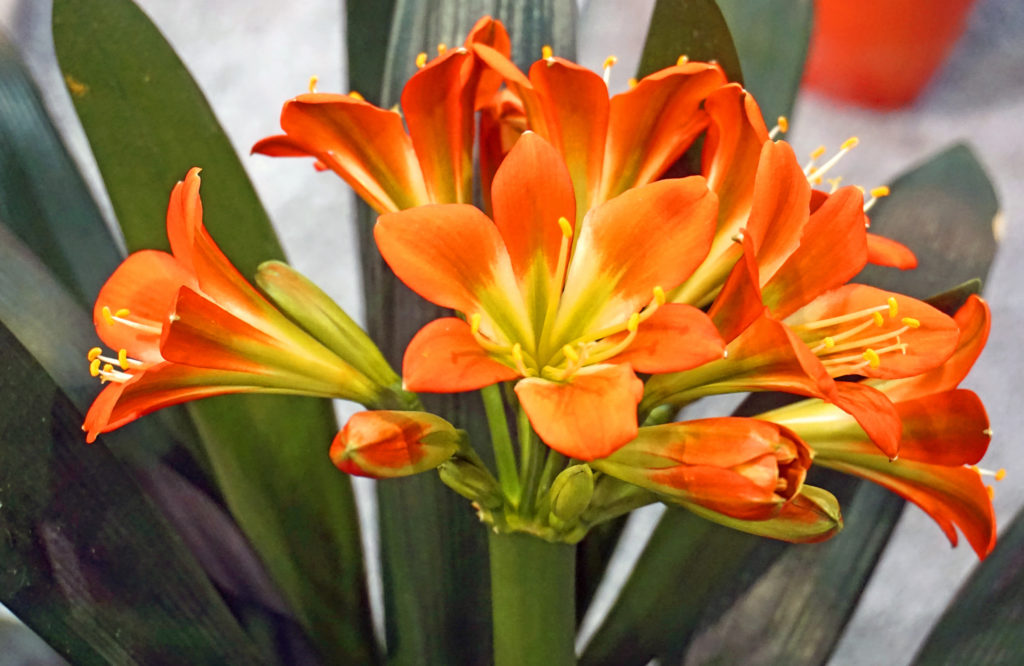
The show stretches over 10 acres of the Convention Center. It includes exhibits of all sizes and types and an array of plants, both native and exotic. They range from large garden exhibits to miniatures. Gardens designed by societies as well as individual exhibits, and exhibition pieces that were not competing for ribbons.

More than 250,000 visitors are expected to attend the PFS this year. The PHS designed two exhibits. “Gardening for the Greater Good,” spotlights the work of the society. “Gold Medal Plants” exhibit highlights this year’s winners of the Gold Medal award.
Native Plants, Take Root
Native plants appear to be gaining an increasing foothold throughout the show.
The Power Plant display harkens to power from a prior era. A restored abandoned mill and water wheel highlight an environmentally beneficial landscape. A naturalized pond filled with stone and aquatic plants offers filtration and habitat for wildlife. A meadow and grove of native trees serve as a backdrop. Lauren Hilburn, Hunter Hayes Landscape Design, created the exhibit.
Plant Societies
Plant Societies bring together gardeners who share a passion to study their and increase knowledge about specific plants.

The Delaware Fern and Wildflower Society of Philadelphia was one of the societies present at the show. The society has about 100 members who are interested in ferns and native wildflowers. They hold two meetings a year as well as take field trips and produce a quarterly newsletter. They share a charming exhibit next to the Rhododendron Society.
The ferns range from the common, to newly discovered ones. Though not rare, the Resurrection fern, Pleopeltis polypodioides, can lose more than 90% of its water content and then revive after a rain storm. Maidenhair ferns, Adiantum, by contrast, die if they lose roughly 10% of their moisture content.
Ferns grow in a range of conditions, but they all tend to be deer resistant (they may eat Christmas ferns, Polystichum acrostichoides, in winter.)
A Virginia bluebell represented the wildflower side of the display. For more information about the society and their field trips, visit www.dvfws.org.
New Plant Gallery
Steve Castorani, owner of American Beauties Native Plants, was invited by the PFS to highlight the role of native plants and pollinators in gardens.
His goal in creating American Beauties was to provide nurseries with a reliable and quality brand of native species and cultivars. The company does not sell hybrids. American Beauty plants sold in your local nurseries are native to your region. Castorani aims to encourage homeowners to create pollinator healthy gardens.

Castorani also owns North Creek Nurseries, a wholesale propagation nursery in Pennsylvania. It specializes in growing starter plants or plugs of perennials, ornamental grasses, ferns, vines, and shrubs with an emphasis on eastern U.S. native plants. Wholesale growers and landscape contractors often use this nursery.
For more information American Beauties plants, go to https://www.abnativeplants.com/
Native to Exotic
The Flower Show includes a seemingly infinite variety of exhibits. They range from carefully planted “front yards” to the Hamilton Horticourt, where hundreds of exhibitors enter their prized plants into competition. Cactuses share floorspace with orchids and elegant floral designs floating in circles. Among the exotic flowers on display are the Ikebana International exhibits.

Ikebana International.
The Ikebana International, Philadelphia Chapter 27, provides non-competitive, educational exhibits at the show. Students and teachers exhibit their works. They are members of one of four schools: Ikenobo, Ohara, Sogetsu, and Ichiyo.
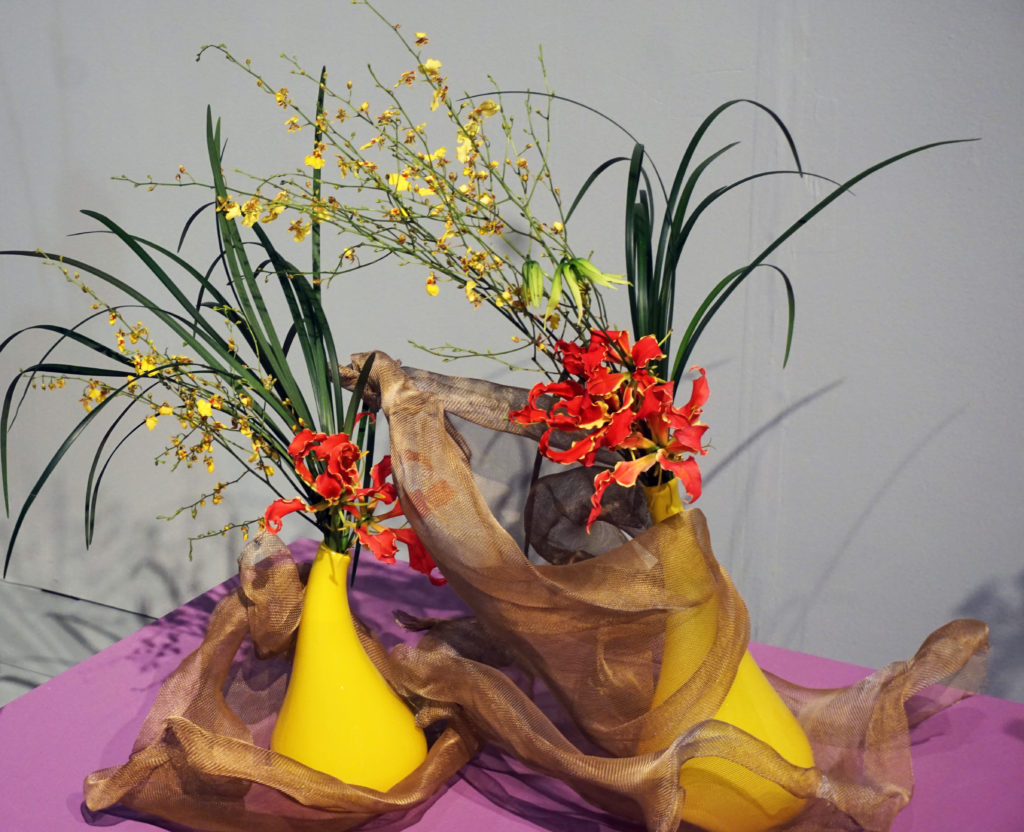
Budapest monks from China originally created Ikebana, said Debbie Dickenson, a member of Chapter 27 who explain the art form. It was then brought to Japan. She noted that there are now hundreds of Ikebana schools in Japan.
PFS Grows Better Communities
The PFS celebrates its 190 anniversary this year. It is the largest and longest-running horticultural event in the nation. More than 250,000 visitors are expected to attend. It aims to promote different and sustainable varieties of plants as well as garden and design concepts. The PFS is operated by the Pennsylvania Horticultural Society (PHS). A non-for-profit organization, the PHS creates programs that are designed to bring people and horticulture together to enhance and beautify communities. PHS supports a wide range of projects that increase social equity and environmental sustainability. PHS also aims to improve the quality of urban life. For more information, go to PHSonline.org
